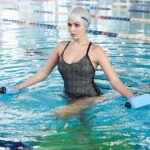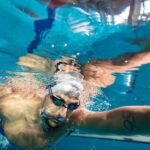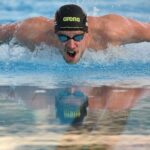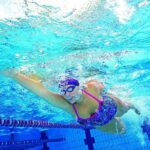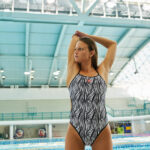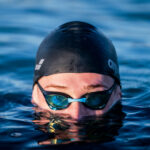Are you sure you are using your hand paddles properly?
Hand paddles are really beneficial for experienced swimmers, but they must be used with care and moderation by less experienced swimmers.
In previous articles we provided an overview of hand paddles. We know they develop the upper body and make it easier to propel your arms in the water. Extremely popular with both coaches and swimmers, hand paddles are beneficial to all swimmers looking to improve their strength in the water, but they need to be used with care.
While they are really beneficial for experienced swimmers, they must be used with care and moderation by less experienced swimmers.
First of all, using hand paddles the wrong way or for too long could actually make your swim technique worse. The greatest difficulty is controlling your arm stroke and body position in the water. If your arm stroke is not technically correct, you will not swim efficiently and will look like a “snake” in the water as you attempt to control the hand paddles properly.
To avoid this, begin with some very simple drills:
Before beginning, make sure you put on fins to help you float. Now put on your hand paddles and try the “zip-up freestyle” technique. With your arms extended out in front of you, start swimming with just one arm, paying careful attention to the pull and thrust phase. At this point, when your arm is completely extended along your side, focus on your recovery making sure your elbow is high and zipping your arm closed in front of you.
[vc_row][vc_column width=”1/1″][vc_video link=”https://youtu.be/KBVF48Nqcfs”][/vc_column][/vc_row]
Perform this drill alternating 25 m freestyle using only your left arm with 25 m using only your right arm. Once you feel comfortable with the drill, you can think about swimming without fins or increasing the distance.
Secondly, overuse of hand paddles can cause shoulder problems. Hand paddles place your shoulder and upper/lower back muscles under excessive strain and, in the long run, extended usage can cause serious problems.
To lessen the load on your upper body, try making these adjustments:
– Use a pullbuoy to keep your body in a horizontal position, so that the muscles in your upper body can work more easily. Pullbuoys help keep your hips higher in the water making your swim stroke easier and reducing the resistance normally caused by a loss of efficiency in your lower body.
– Include the following in your warm-up: 10×50 m freestyle with a pullbuoy and hand paddles with 20” recovery, swimming 1 x focusing on technique (see above) 1 x hypoxia breathing ever 3/5 strokes and changing every 25m
– Alternate swimming with and without paddles. Depending on your level, your sessions with paddles will vary in length. Swimming is a complete sport and having well-balanced upper and lower body muscles is essential. Focusing only on your arm stroke using paddles could actually be counter-productive. To find the right balance, try some “combo” drills.
- 6 x 100 m freestyle with 20” recovery swimming 1 x 50 pullbuoy + hand paddles/ 50 complete stroke 1 x 50 pullbuoy + arm paddles / 50 legs with pullbuoy out in front
Remember no training drill will turn you into a better swimmer unless it is performed correctly. Learn to use the proper technique and combine arm and leg work correctly to make your training more varied and effective.
Written by:
arena coaches
Swim coaches, trainers and experts will give you all kinds of tips for performing at your best in both training and races.
